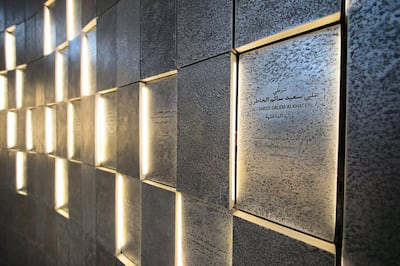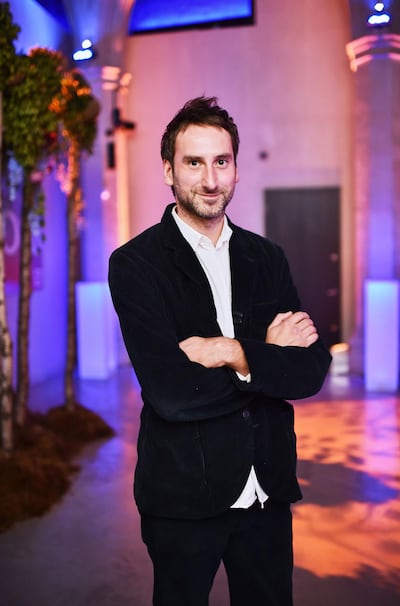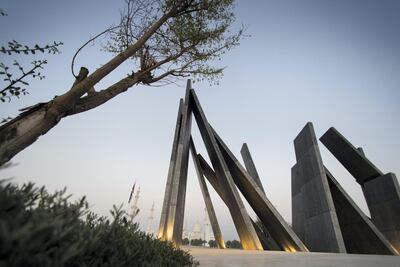Opposite Abu Dhabi’s Sheikh Zayed Grand Mosque, a series of heavy grey slabs lean against each other, as if arrested in the process of falling. Some appear to be supporting the weight of others; others seem simply caught, mid-descent.
The work is a memorial to the UAE’s martyred soldiers, titled Wahat Al Karama, or “Oasis of Dignity”, by British artist Idris Khan. It opened to popular acclaim in the UAE two years ago, and has been winning critical awards since.

Over the summer, the German Design Council announced the memorial had won one of their Iconic Awards for architecture. This was followed a few days ago by the CODAworx design and art award, which recognises, in the words of one of its jurors, how the project calls “our minds, souls and bodies to respond simultaneously”.
“The work has started to get a lot of momentum on the global stage,” says Khan, a soft-spoken, unpretentious artist who lives in London with his family.
The project was also recently longlisted for a Dezeen award, from more than 3,500 entries, and last year won an American Architecture Prize for cultural architecture.
'The project took a lot out of me'
As for Khan, two years on from completing the project, he still feels the effects from the memorial.
“It took me quite a while to get back to creating again,” he says. “It was about a year-and-a-half before I could really feel myself getting back into the studio – not the ongoing work that you sort of know how to make, but fresh ideas. The project took a lot out of me.”
"To achieve something of that scale – it was quite overwhelming," he says. "I look back at it now thinking: I actually did that. Not many artists get the opportunity to make a monument – where do you go from there?"
The answer is, of course, onwards. Khan, who was knighted with an OBE last year, is currently working on an as-yet unannounced civic project, as well as a major commission for the British Museum’s new Islamic Art wing, opening mid-October, for which he is making a series of works on paper.
Khan achieved success early in his career with composite images that played with time, legibility and personal memory, and which were finely attuned to texture and materiality. Paintings of architectural structures are made, for example, out of black dust and rabbit-skin glue.
This mix of the visible monumental and the haptic human-scale is also at play in Wahat Al Karama, which is striking enough to hold its own when seen from 100kph on Sheikh Zayed Road, but also unfolds on a more intimate gauge to visitors who wander around.
The falling blocks, clad in aluminium, are inscribed with poetry written by Sheikh Zayed and the aluminium bricks in the pool area below, lit through chinks in the walls, bear the names of fallen soldiers.
Khan admits it was a tough brief. “You have the big road running by, and then you have to compete with the grandeur of the mosque [Sheikh Zayed Grand Mosque] with the quite minimal sculpture. I had to think about grandeur in terms of scale,” he says. “It was an intense period.”
_____________
Read more
Abu Dhabi's Wahat Al Karama wins 2017 American Architecture Prize
Wahat Al Karama memorial to open for public
Leaders honour UAE heroes at Wahat Al Karama memorial
_____________
















